Entering new markets is always risky. However, a well-informed go-to-market strategy can soften the landing in a new area. In this guide, we will explain to online business owners and heads of marketing how to build a viable go-to-market strategy overseas. Let the GTM strategy checklist at the end of the article help you.
What Is a Go-to-Market Strategy
In a nutshell, a go-to-market strategy is a planned system for distribution and delivery of goods and services to a new target market, including, among other things communication of marketing messages and brand values.
A GTM strategy is aimed at achieving a product-market fit in a specific region or niche and establishing a company’s presence in the market.
Many businesses must expand to new markets to attain brand awareness, increased sales, and business stability. For such businesses, assembling a reasonable go-to-market strategy is essential, and this is what our guide aims to help with.
Craft a Successful Go-to-Market Strategy
When your company chooses to expand to new markets, that choice comes with a similar kind of risk to opening a business. It requires detailed, strategic planning, and doesn’t happen haphazardly or overnight.
So, how do you craft a winning go-to-market strategy? Let our guide walk you through the key points of a successful GTM strategy.
Consider Local Market Peculiarities
Start by taking a closer look at the market you’re considering. You should already have noted certain specifics of the chosen territory or niche when doing initial market assessment; now it’s time to bone up on the peculiarities, so you don’t have any unpleasant surprises down the road.
1. Scrutinize the economic situation
Thoroughly assess the state of the economy in your chosen region to see whether or not it’s a good fit.
Starbucks won many foreign markets but has been unable to replicate its success in Australia.
Firstly, they began to enter the market without fully understanding their customers. Starbucks started to promote coffee as a product, but for Australians, it was an experience that needed to be understood, rather than just another existing product from a new brand.
Secondly, the company opened 90 cafes all over the country, but as a result of the global recession in 2008, it was forced to close two-thirds of its stores in Australia. The purchasing power of potential customers in the new market had been affected, and the last thing they wanted to spend money on was a new foreign coffee brand. The economic situation played a crucial role in slowing down Starbucks expansion in Australia.
Starbucks had enough financial resources to sustain itself, but not every brand could survive in such a situation.
2. Understand local politics
To gain a handle on the business climate of a location, you also need a thorough understanding of local politics. Some markets may not prove as suitable because of a political regime, endemic corruption, or overall instability.
3. Analyze local laws and regulations
Even big-name brands can struggle when it comes to local laws and regulations.
When Uber attempted to expand into South Korea, for example, many assumed they were a shoo-in. After all, the company boasted well-established markets in many nations around the world. However, Uber failed to understand their target market, and this came with dire consequences.
The taxi industry in Seoul is bearish because of too many taxis and a slowdown of the population growth rate. Seoul alone has more than 70,000 taxi drivers (versus New York City’s 13,000). The government started to reduce the number of taxis, and offices no longer issue taxi licenses. As a result, the price of taxi licenses bought and sold has significantly increased.
If Uber were now to begin operating in the market, the taxi industry would see a considerable decrease. The government was afraid of an adverse reaction from industry representatives, and Uber’s development in South Korea has been hindered as a result of these regulatory issues.
The takeaway? Without proper preparation, any market expansion plan is foolhardy.
4. Consider language barriers
Consider the WhatsApp expansion in Germany. WhatsApp has acquired 1.2 billion users by successfully scaling up worldwide. However, before expanding into Germany, they failed to translate their terms of use into German.
As a result, the Federation of German Consumer Organizations filed a lawsuit against the company charging that the technical language was “largely incomprehensible” to German users. A small oversight cost the company more than a quarter of a million euros.
A smaller brand likely wouldn’t have weathered this challenge successfully.
5. Study price sensitivity
Look at factors such as the average amount of disposable income that residents have. If the margin is too low, residents may not be able to afford your products.
6. Be alert of the seasonality
Last but not least, geographic realities such as reversed seasons between the Northern and Southern Hemispheres may have a huge impact on consumer demand.
Understand How Cultural Differences Influence Customer Decisions
Cultural differences are a potential stumbling block when developing a GTM strategy. Companies create products or services to fulfill particular needs and solve specific problems. However, not all prospective markets have the same needs and problems.
In Spain, for instance, it is common to “sleep on” an issue, while in Japan, when there is an issue, they hold meetings. Of course, these examples may be stereotypical, but they show how communication, acquisition, and decision-making vary.
Do your target customers normally make group decisions, or do they buy products individually just by quickly entering their credit card?
Do they need as much personal communication as in Brazil or Japan, where face-to-face meetings are more popular than phone calls and video conferencing?
Consider DoorMint’s failed expansion into India. DoorMint started as an on-demand, online services marketplace connecting service providers (e.g., plumbing, pest control) with customers.
As the company expanded, they decided to specialize, focusing solely on online laundry and dry-cleaning. This choice proved a fatal error in India where traditional launderers or dhobi have long satisfied this need. DoorMint was unable to compete with tradition.
Specify Your Target Market’s Interests and Demographics
Besides a firm cultural footing, you should also pay attention to your target market’s demographics and interests. They may prove to be vastly different in a new region.
Fortunately, the SEMrush Market Explorer tool allows you to study your new market’s audience characteristics. This granular level of data will help you prepare for a successful expansion, while avoiding unpleasant surprises.
Ascertain Your Potential Product-Market Fit
You must confirm your product-market fit in the current region before you even start assessing a new market for expansion. At the point of building a go-to-market strategy, though, your task is to research your ideal future customers in every detail, and estimate the potential demand.
You can analyze the potential market with the help of SEMrush’s Market Explorer. That way, you can easily understand if there is sufficient demand for you in the region and if it is worth studying the field further, without lengthy and costly market research.
To begin, you can use your domain or choose one of your potential competitors already active in this market. Don’t forget to choose a specific country.
The first thing to pay attention to is the market traffic for last year. If traffic decreases, this indicates that the market is becoming less interesting for business. If market traffic is growing, this may be a good option for investment and business development.
Make Your Value Proposition Clear
A fantastic value proposition remains the prerequisite to scale. Consider what benefits customers can expect and what your key differentiators are. Answer these questions:
- How does your product or service solve/improve problems?
- What benefits can customers expect?
- Why should customers buy from you instead of your competitors? In other words, how are you better than your competitors?
Then, articulate a value proposition that will be an intersection of all three.
Be careful to research your specific market, because what works in one region or niche may fail in another. Your offering may be too complex or irrelevant to the new market, the price may be too high, or it could be any number of other obstacles. Even successful brands find there are some markets where their products and services aren’t in high demand.
For example, SEMrush enjoys enormous success globally, providing data to more than six million users. Nonetheless, SEMrush proves the most insightful for Google, which means the countries where alternative search engines dominate won’t make great markets for us. Fortunately, we’ve done our homework — and we urge you to do the same.
Don’t end up like Coke, attempting to market two-liter bottles in Spain. Despite the brand’s popularity, their venture failed because Spanish refrigerators typically couldn’t hold such big bottles. Or consider the lesson learned by General Foods in Japan. The company spent millions of dollars marketing cake mixes, yet sales remained abysmal because only three percent of Japanese homes had ovens!
To conclude, you need to define your value proposition properly: supported by the specified customer persona and underserved needs, it can help you achieve product-market fit in the target region.
Decide on Your Market-Entry Strategy
Globalization has changed the way companies approach their distribution strategies.
If we think about physical production, manufacturing can now be spread all around the world, and products can be delivered to the markets on a just-in-time basis. It is similar for e-commerce businesses that can manage delivery of goods from local suppliers. For software companies, meanwhile, geographic borders often only matter in terms of legislation, talent hiring, and language barriers.
However, economic uncertainties can influence even those “globalized” businesses. This means you need to think carefully before choosing your distribution channels in a new market. Consider the variety of channels:
Direct distribution occurs through company-owned channels, and more businesses are moving in this direction. Direct distribution permits companies to cut out the middleman and own every part of their operation, resulting in higher customer satisfaction.
Indirect distribution involves partnering with third parties to sell and fulfill your company’s value proposition. Many big-name companies use this approach to leverage relationships through third-party partners.
This is exactly how SEMrush entered the Japanese market, with the help of partnering with a digital marketing agency,oRo. This strategic partnership helped to double the performance results on the market.
Companies also have the option of a hybrid distribution system, involving both company-owned and third-party mechanisms. Many companies today (for example, Nike) rely on this model, giving them the best of both worlds.
Be Equipped for the Common Payment Systems in Your New Market
Let’s consider CP (card-present transaction) and CNP (card-not-present transaction) payment methods in different countries.
Did you know that 33 percent of Americans prefer to pay by credit card, followed by mobile/digital wallet, and then debit card? In other words, to do business in the US, your business should be credit card-friendly.
Other parts of the world rely more on different payment types. In Germany, 29 percent of consumers prefer to pay by bank transfer.
Debit cards remain the most popular payment form in Russia, at 28 percent.
Finally, in China, a whopping 71 percent of customers use digital/mobile wallet, followed by credit cards and bank transfers.
Diving into one of these markets without getting equipped to accept the popular payment types will sink your ship before it sails. As you can see, you must perform detailed research before moving into a new country.
What about attempting to break into a world market based on a region or continent? This approach is ill-advised. After all, Africa alone has 54 countries, and Europe has 44. Each of these countries has disparate cultures, languages, and even payment preferences.
Determine Your Customer Purchase Funnel
Ask yourself the following questions as you develop a marketing funnel to bring in leads and facilitate conversions:
- How are consumers going to find you?
- How are they going to convert?
- How are you going to make them loyal customers?
The best sales funnels attract new customers while fostering repeat business. Retaining customers remains far more lucrative than acquiring new ones.
As for awareness, consider a wide-ranging campaign to attract new people to your brand. This could include everything from digital and print materials to events.
Remember that different channels can prove more effective, depending on your market. For example, as SEMrush expanded into Vietnam, we relied on outdoor signage (suggested by our partners) to make a splash, and it helped us achieve our goals in the market.
Prepare a Marketing Strategy
What is a tried and tested method for preparing a marketing strategy? It begins with analyzing your competitors’ strategies. Fortunately, competitor analysis is easier than you might think, especially with the right tools.
Use SEMrush Traffic Analytics to gain access to valuable insights about your competitors’ successes and failures.
Let’s look at Square’s Japanese traffic as an example. As you can see, Japan is ranked third in terms of traffic volume.
If you’re thinking about entering the Japanese market, this is how to filter your Traffic Sources report. As this analysis shows, the majority of the traffic they receive is direct. This fact indicates a significant previous investment in brand awareness to gain users who visit them directly.
Furthermore, around one-third of their traffic comes from searches. This figure should pique your interest enough to take a look at their Top Pages. There, you’ll see if content marketing is giving them an edge.
As for referrals, this is where having partners that send you traffic helps. The referral companies that pop up could become your affiliates or resellers in the new market, if you’re a competitor of Square.
SEMrush Traffic Analytics proves a quick way to understand your competition’s strategies. As you think about your purchase funnel and how you’re going to impact the market, you can leverage the insights you’ve gained about the current market to your advantage.
Make Sure Your Company Is Ready to Enter a New Market
Often, we hear from companies whose stakeholders differ in their views on global growth. Some members of the team might feel quite motivated to expand, while the majority – say, the leadership -doesn’t see the point.
Before making this kind of commitment, however, you need to get everyone on the same page about your company’s movement onto the international stage. How do you do this? By addressing the following items:
- Goals and alignment
- Internal capabilities
- Human Resources
- Optimal timing
When it comes to goals and alignment, you should ask yourself this question: what do I want to achieve with global expansion? Be specific when it comes to your ultimate objectives and make sure they are measurable.
As for internal capabilities, you should seriously consider the characteristics necessary for success on the international front. You should then make sure all of those mechanisms are in place.
You’ll also want to think carefully about the current state of your Human Resources and the talent gaps you may have. Ask yourself this: do I have the talent I need to manage the expansion?
Last but not least, you’ll want to ascertain the best time to act. This factor will involve a careful analysis of the target market, its current political state, global economics, your company’s current domestic positioning, etc.
Create a One-Page Action Plan of Market Expansion
Now let’s draw up a one-page action plan for market expansion. You can develop your own go-to-market strategy template or use something like the one we’ve put together. No matter the format, make sure it includes:
- expansion GEO
- goals
- budget
- your value proposition
- go-to-market
- organization
By organizing your approach in a one-page document, you gain the ability to visualize initiatives and see timeline detailing at a glance.
How Can Data Help You Build a Stronger Go-to-Market Strategy?
Your go-to-market strategy will take time to create. It requires plenty of research and digging extra-deep to avoid the types of errors that have plagued big brands such as Uber and Coke.
As you move forward with your plans to grow globally, make sure your decision is well-calibrated and data-driven. Assess the market you’re considering thoroughly, and don’t leave anything to chance. Use the elements mentioned in this article as a new market entry checklist to guide your expansion.
Are you ready to dive into the research necessary to develop a market expansion strategy? Learn more about how to estimate market potential through competitive landscape analysis.
This marketing news is not the copyright of Scott.Services – please click here to see the original source of this article. Author:
For more SEO, PPC, internet marketing news please check out https://news.scott.services
Why not check out our SEO, PPC marketing services at https://www.scott.services
We’re also on:
https://www.facebook.com/scottdotservices/
https://twitter.com/scottdsmith
https://plus.google.com/112865305341039147737
The post How to Build an Impeccable Go-to-Market Strategy [Checklist] appeared first on Scott.Services Online Marketing News.
source https://news.scott.services/how-to-build-an-impeccable-go-to-market-strategy-checklist/

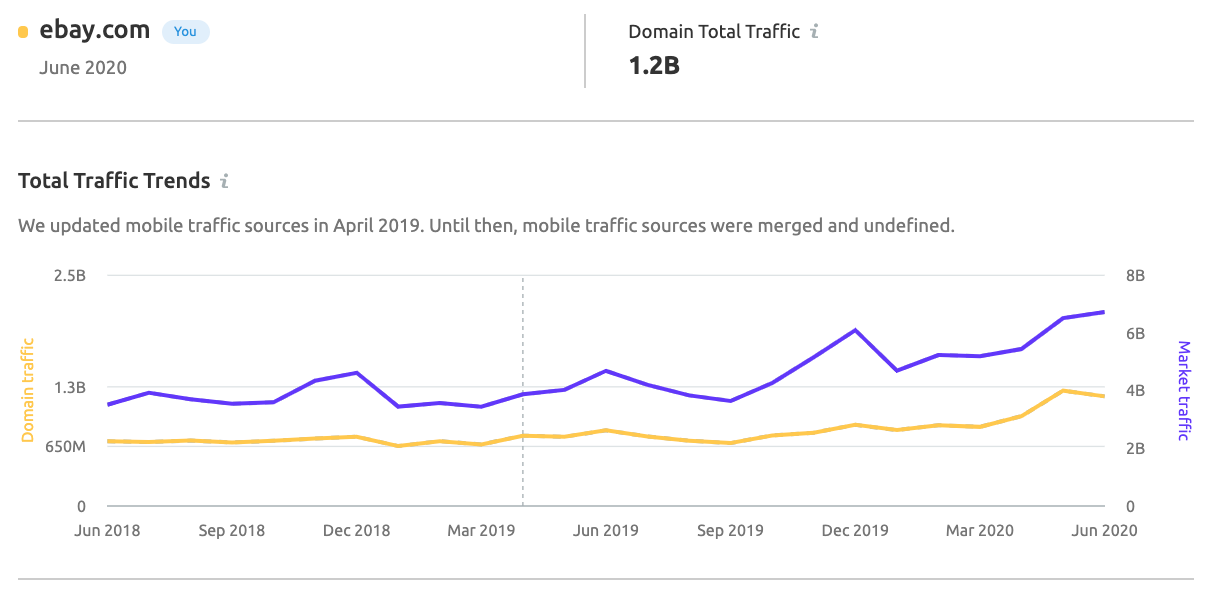
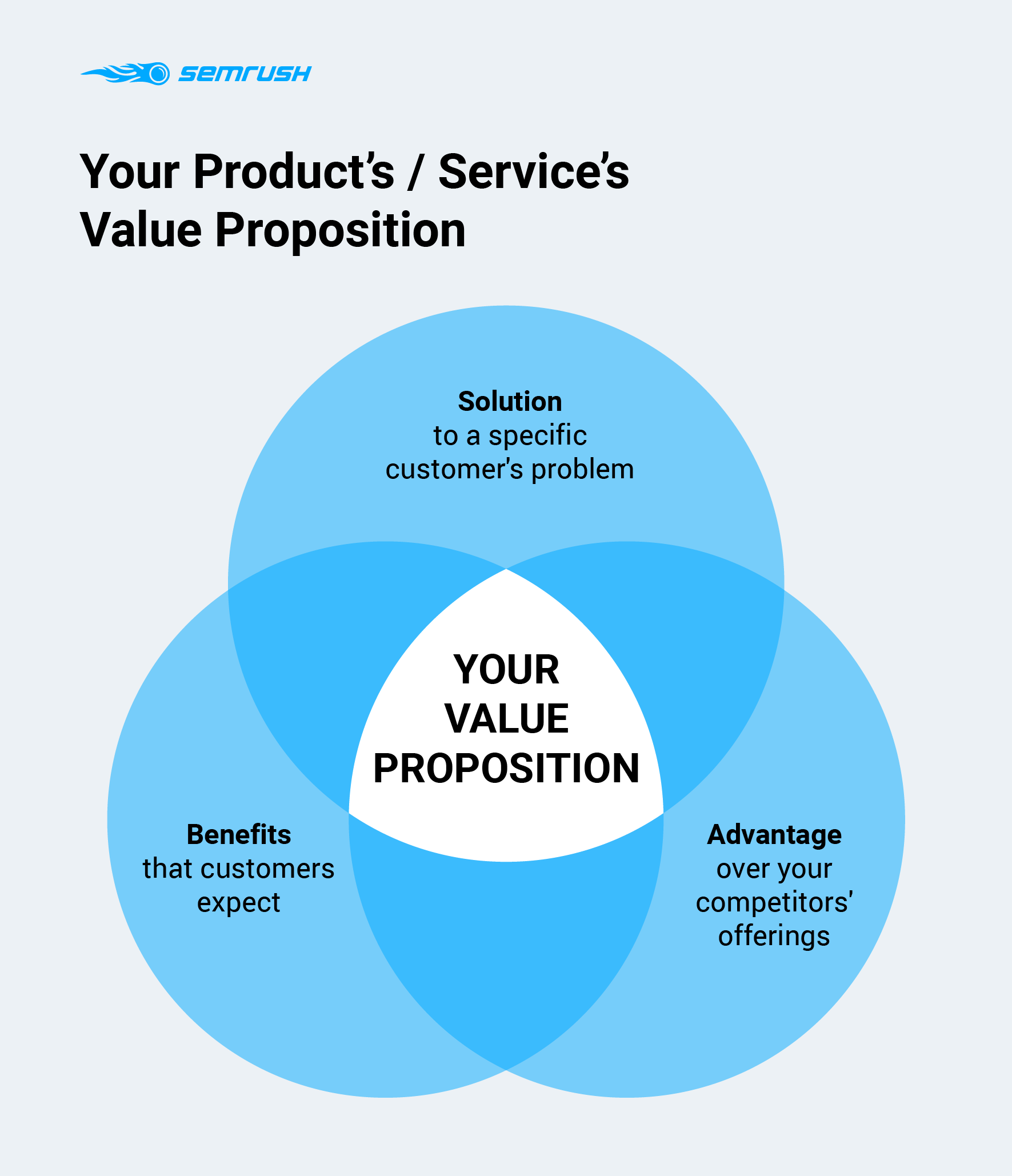
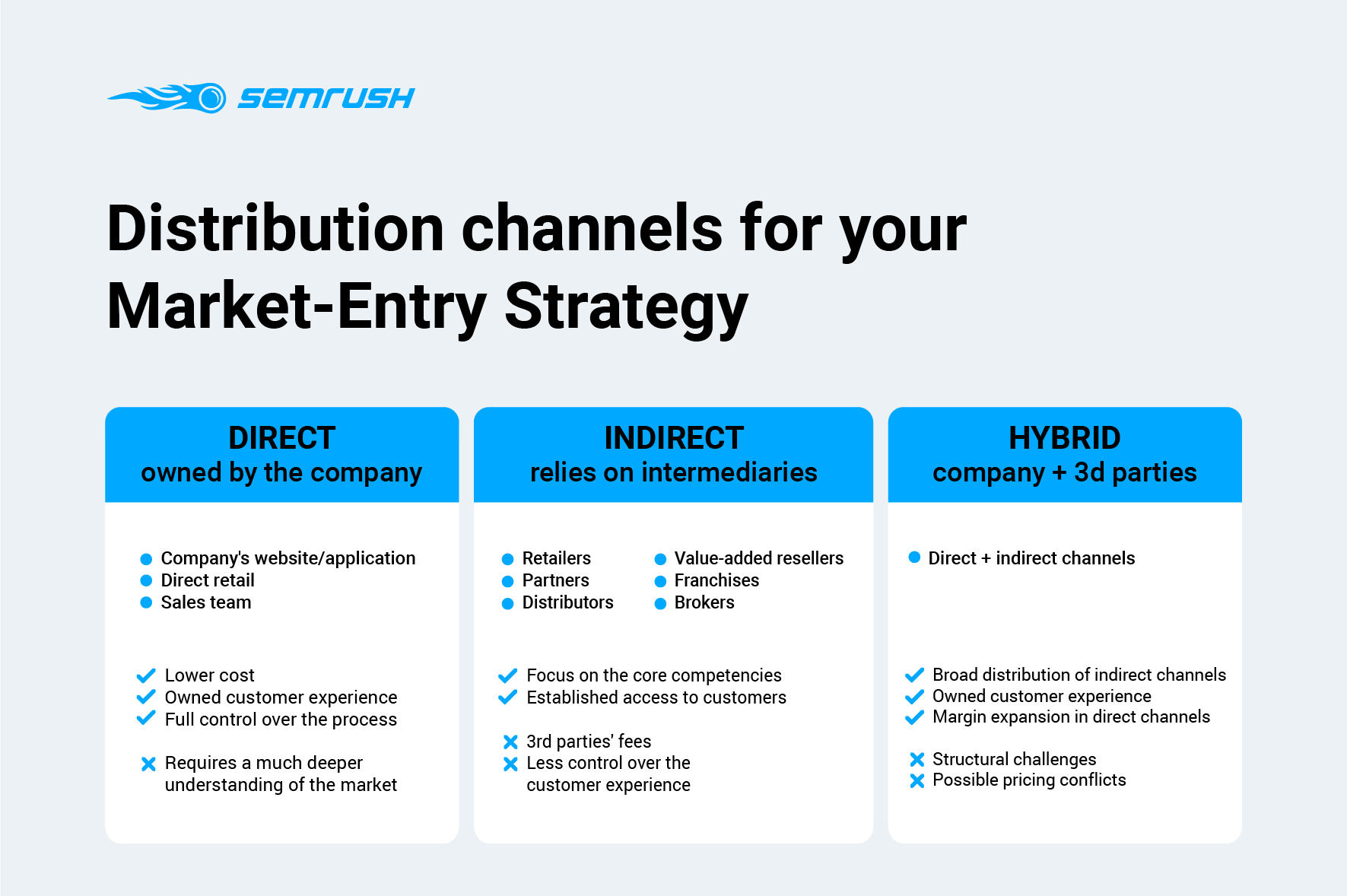
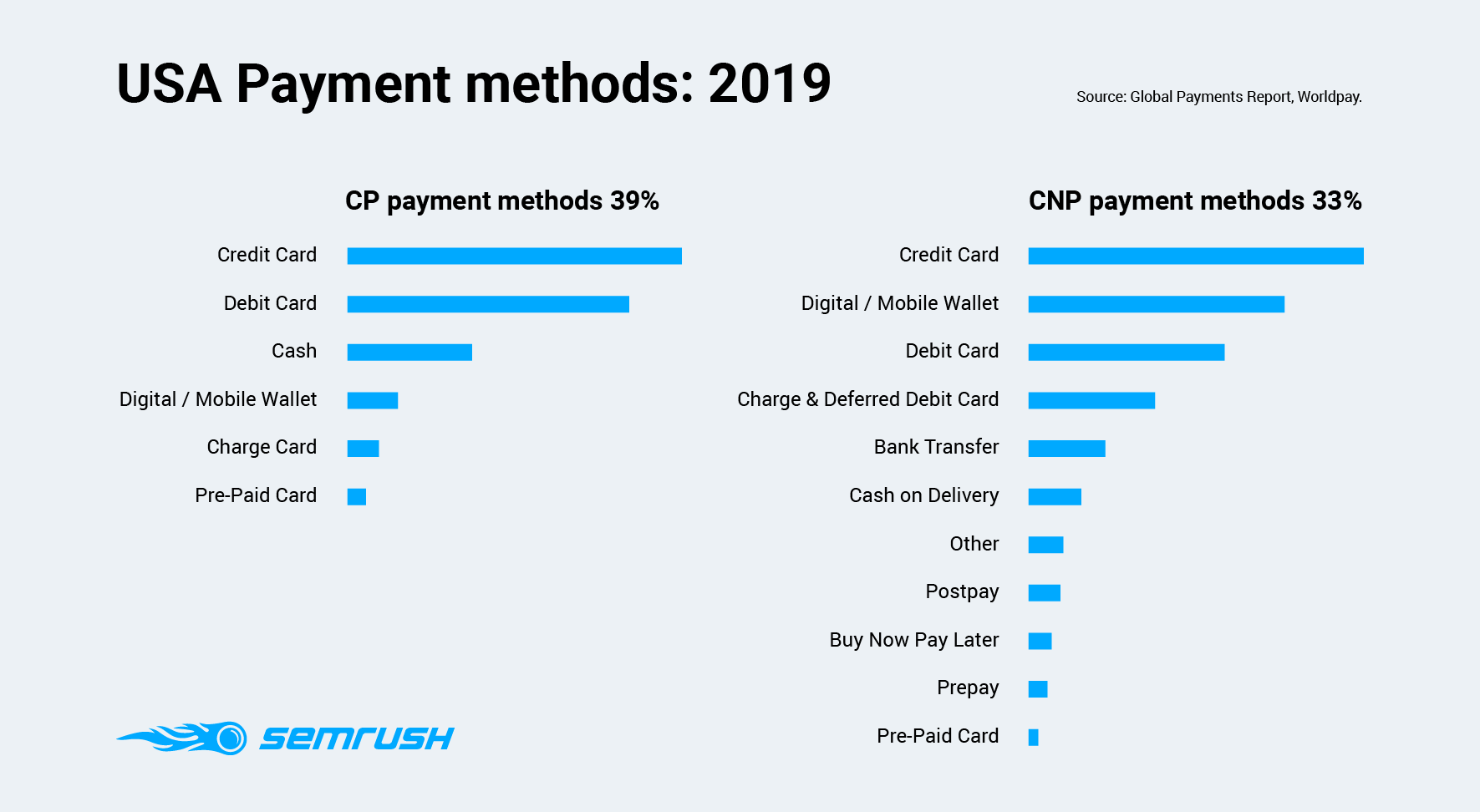

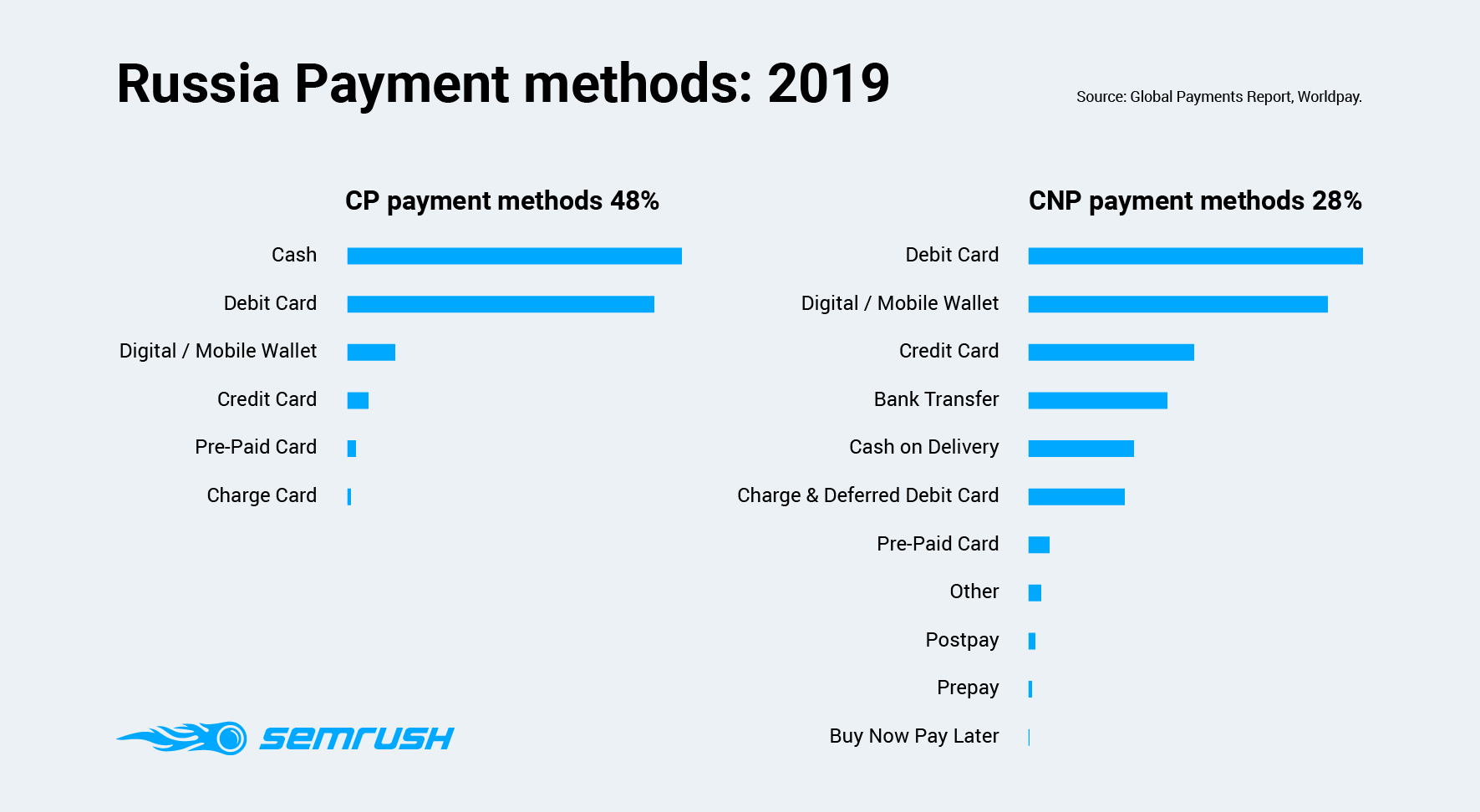
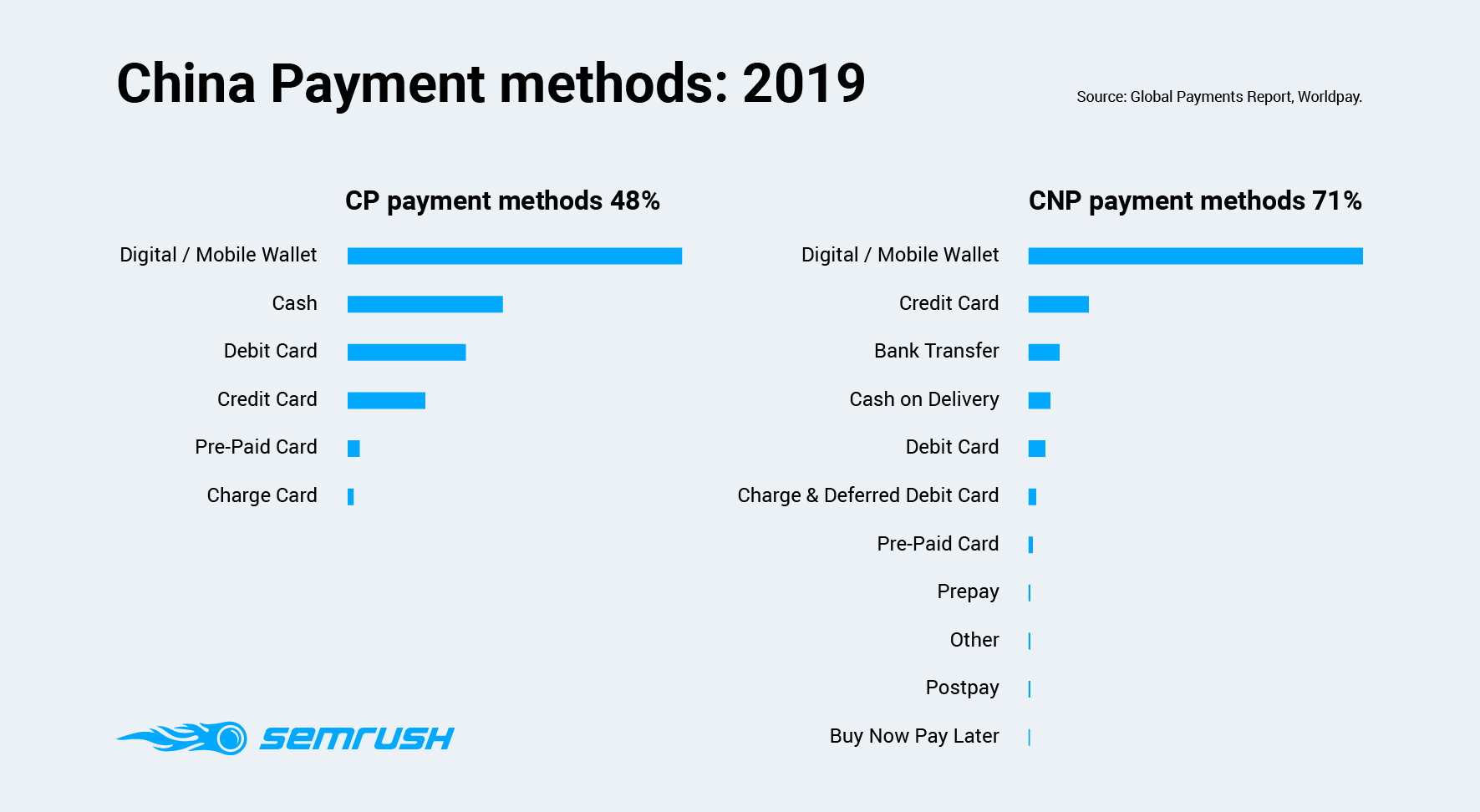
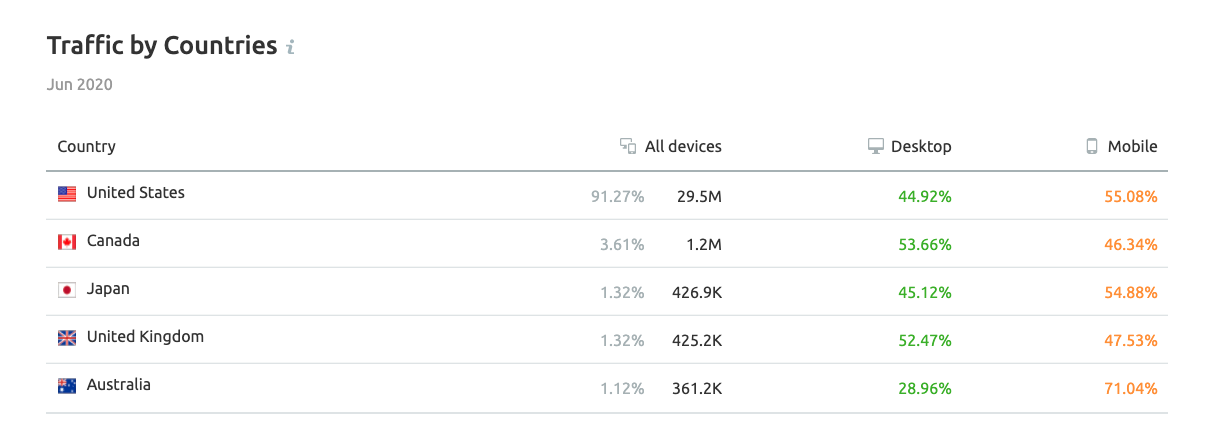

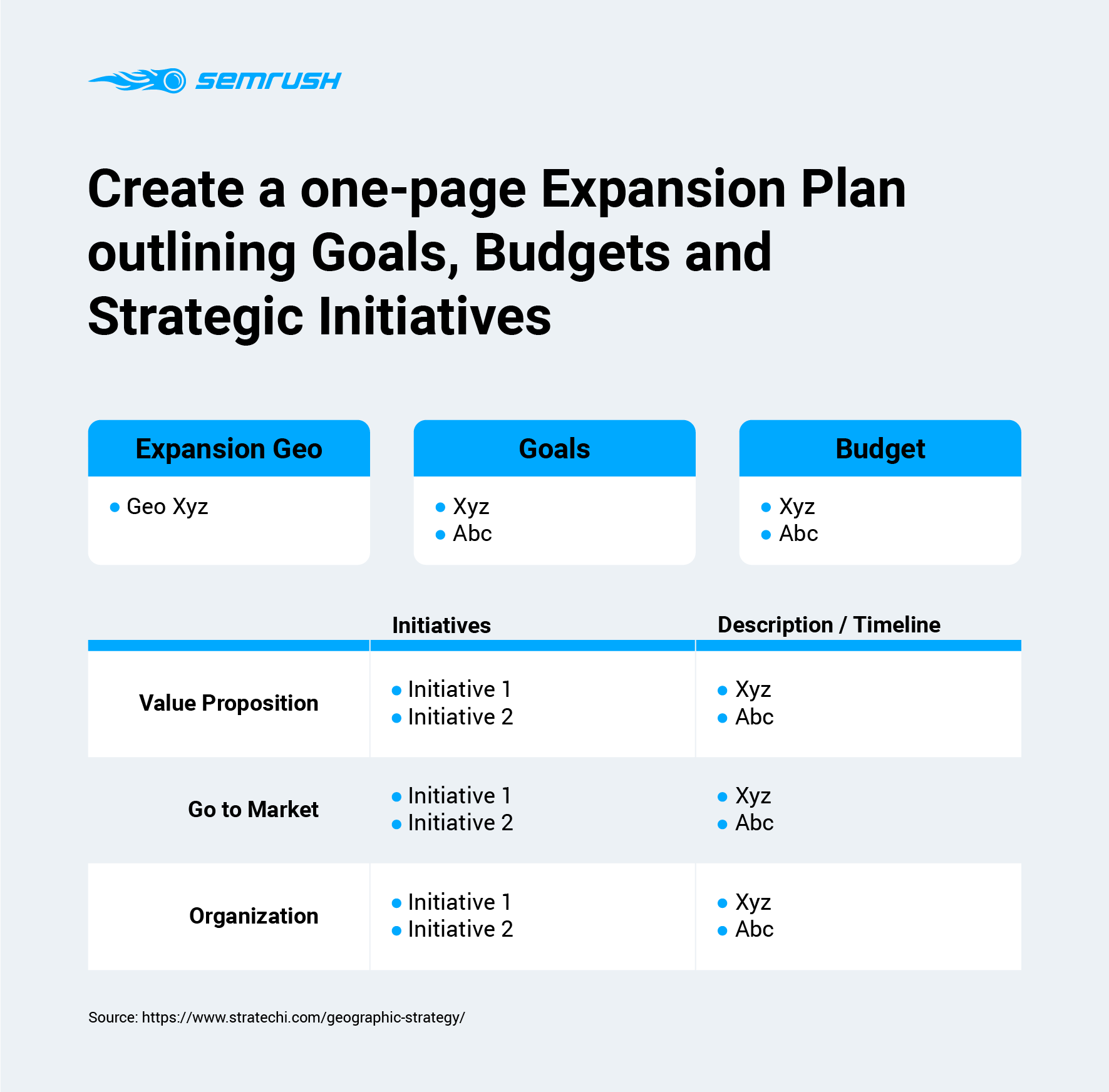
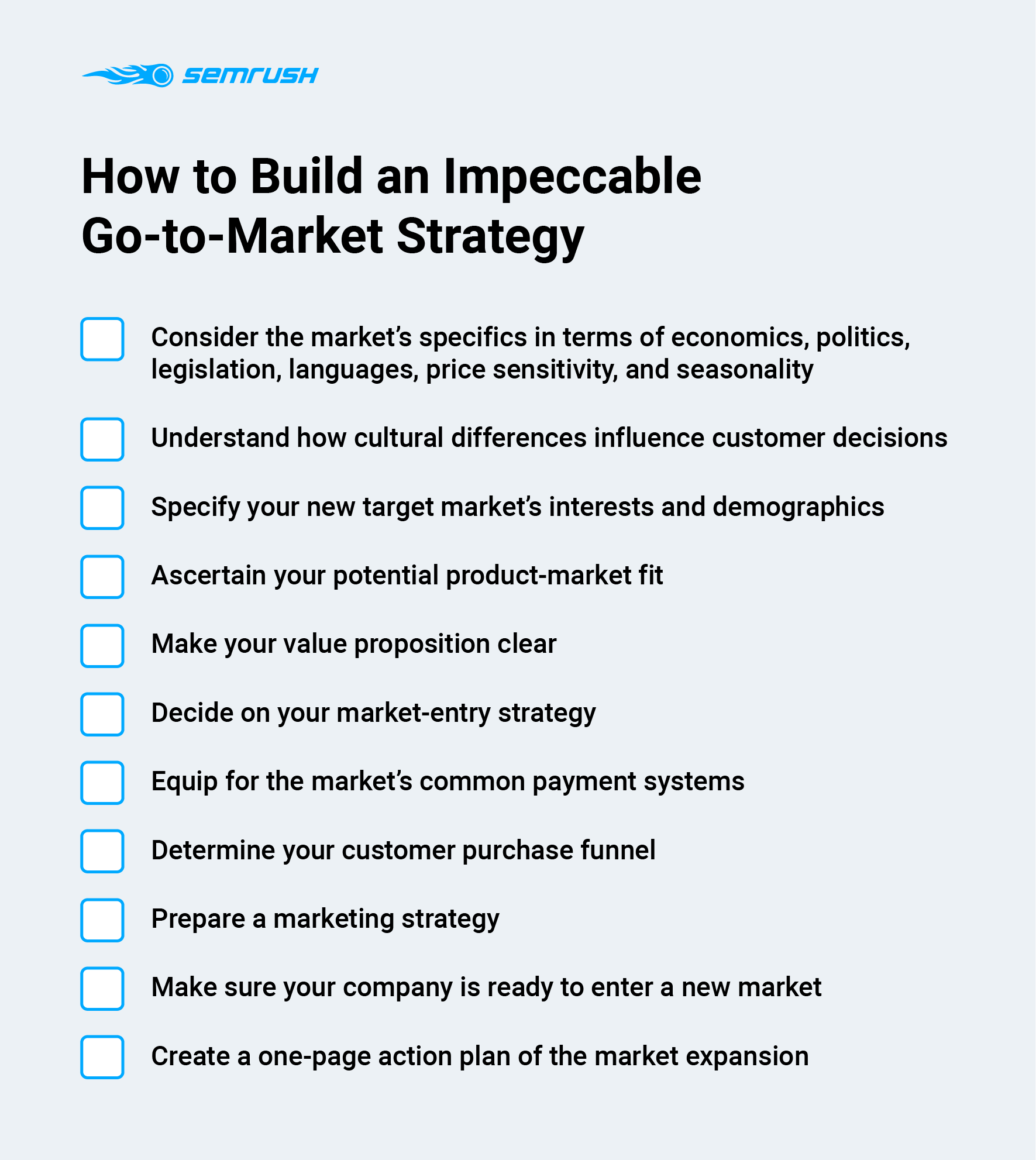
No comments:
Post a Comment